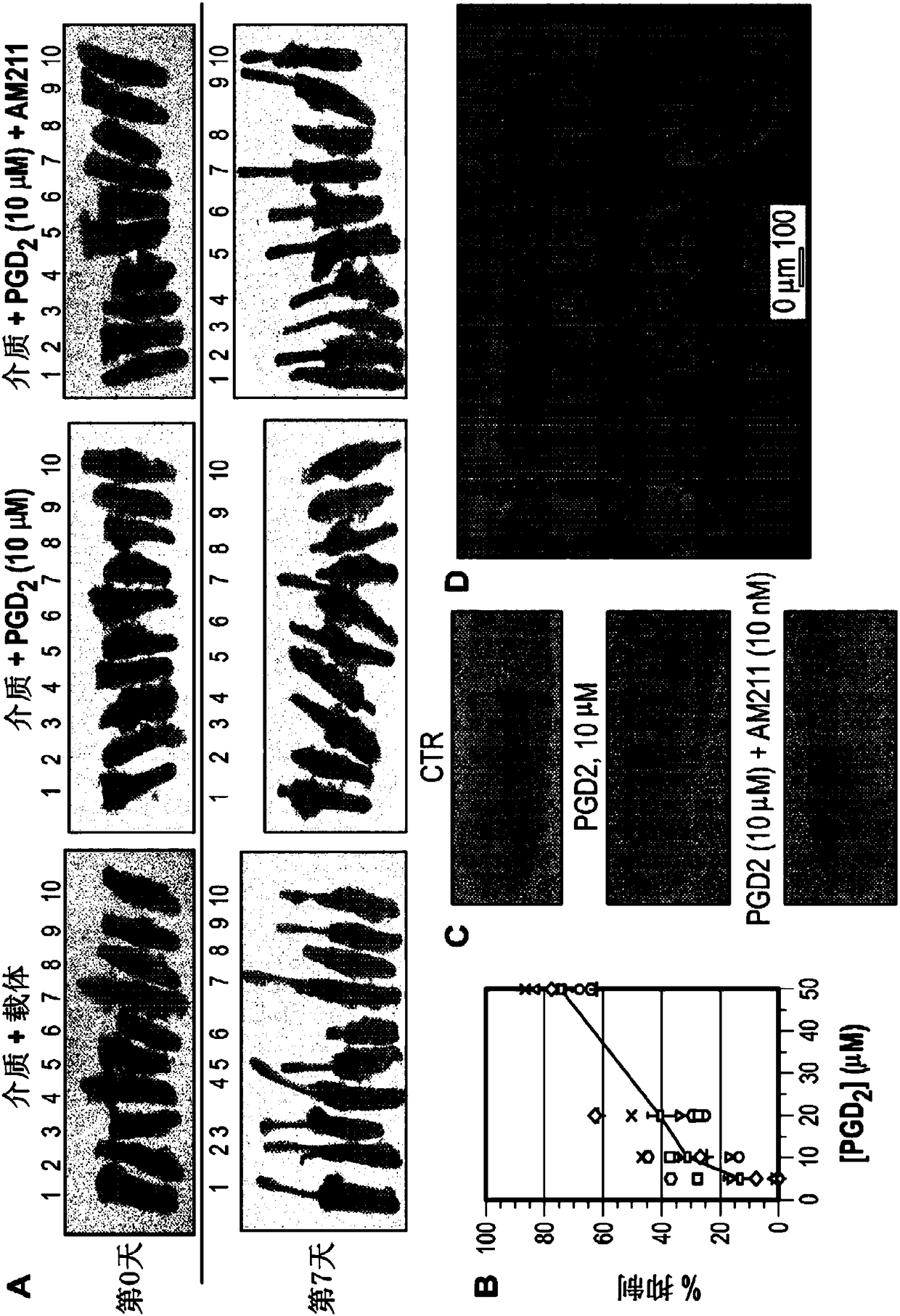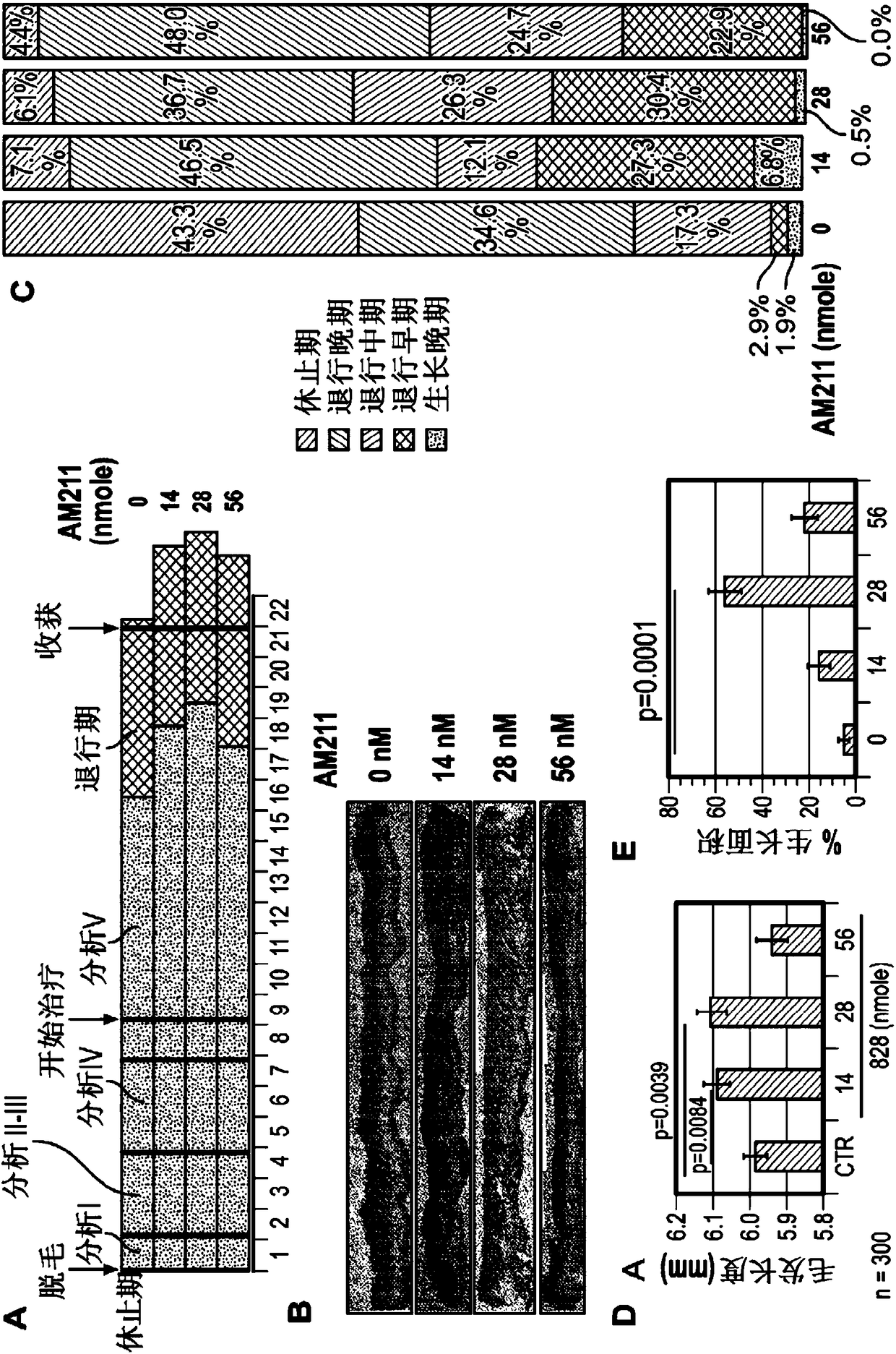Single nucleotide polymorphic alleles of human dp-2 gene for detection of susceptibility to hair growth inhibition by pgd2
A single nucleotide polymorphism, DP-2 technology, applied in hair care, grooming preparations, medical preparations containing active ingredients, etc., can solve the problem that the active target of minoxidil has not been determined
- Summary
- Abstract
- Description
- Claims
- Application Information
AI Technical Summary
Problems solved by technology
Method used
Image
Examples
Embodiment
[0103] CRTH2 / DP-2 antagonists reverse the effect of PGP 2 hair growth inhibition
[0104] Androgenetic alopecia (AGA) is the most common type of hair loss, affecting approximately 50% of men and 30% of women before the age of 50. Apart from testosterone being necessary for the development of AGA in men, other contributing factors remain unknown. Blocking the conversion of testosterone to its more potent form, dihydrotestosterone, by administering the drug finasteride (Propecia) benefited early-stage AGA patients, but did not completely reverse hair miniaturization. This suggests that the development of more effective treatments depends on identifying other factors that also contribute to the development of AGA.
[0105] To achieve this goal, we previously used a global gene expression approach to discover differentially expressed genes in bald versus non-bald scalp from the same individual (Garza et al. (2012) Sci. Transl. Med. 4, 126ra34). Prostaglandin D 2 Synthase (PTGD...
PUM
 Login to View More
Login to View More Abstract
Description
Claims
Application Information
 Login to View More
Login to View More - R&D
- Intellectual Property
- Life Sciences
- Materials
- Tech Scout
- Unparalleled Data Quality
- Higher Quality Content
- 60% Fewer Hallucinations
Browse by: Latest US Patents, China's latest patents, Technical Efficacy Thesaurus, Application Domain, Technology Topic, Popular Technical Reports.
© 2025 PatSnap. All rights reserved.Legal|Privacy policy|Modern Slavery Act Transparency Statement|Sitemap|About US| Contact US: help@patsnap.com



